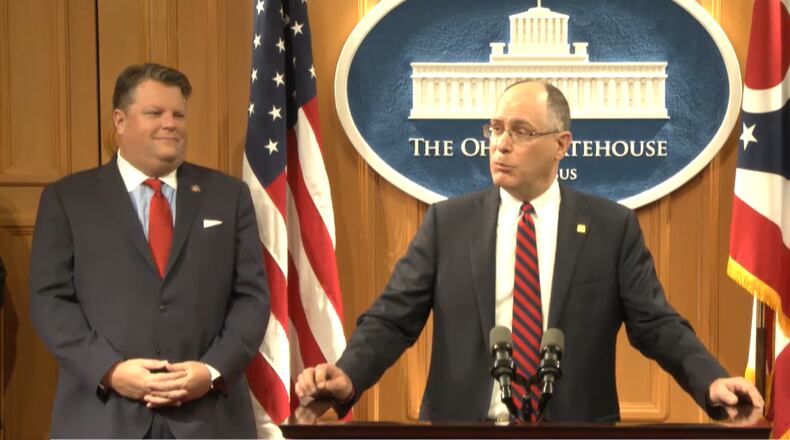Ohio is among the top states in recruiting students to the state’s colleges and universities, but it’s also faces a deficit of Ohio high school graduates. In the next few years, Ohio’s graduating classes are expected to shrink by about 11%.
That will affect the future of the Ohio workforce, Cross said, noting that major companies such as Marathon Oil and Sherwin-Williams have stayed in Ohio because the state has helped with workforce recruitment.
The proposal has four major components:
- A graduate of an Ohio university or college who stays in Ohio after graduating will get a three-year, 100% state tax credit.
- 100 loans of $25,000 each will be made available for out-of-state students enrolling in any of Ohio’s four-year higher education institutions if they are in the top 5% of their high school graduating class and pursuing a degree within a STEM field. The loan will be forgivable if they stay in the state after graduation.
- Students who have completed an associate degree and want to pursue a bachelor’s degree can get a state grant to continue their education. Cross said there is high demand for bachelor’s degrees, and the state wants to encourage people to get those.
- Ohio employers will earn a refundable tax credit of 30% of paid wages for students who engaged in internships, apprenticeships and co-ops.
Cross said the amount of money in the proposal is large, but it is worth investing in Ohio’s future workforce and said the act would widen the tax base. The average salary for a college graduate is between $47,000 and $53,000, according to Cross.
“There are some brilliant minds all over this country. We want to recruit them right here to Ohio, and then keep them here,” Cross said.
University of Dayton president Eric Spina noted that last year alone, the state’s private colleges and universities brought in about 25,000 new full-time students to Ohio.
“That is a talent pipeline for the future of Ohio that we all want to tap,” Spina said at the press conference.
He said keeping “young, bright minds” in Ohio after graduation is “critical for our future.”
“We can’t afford to be near the bottom of workplace retention and innovation,” Spina said. “We need to be, we deserve to be, near the top.”
About the Author

